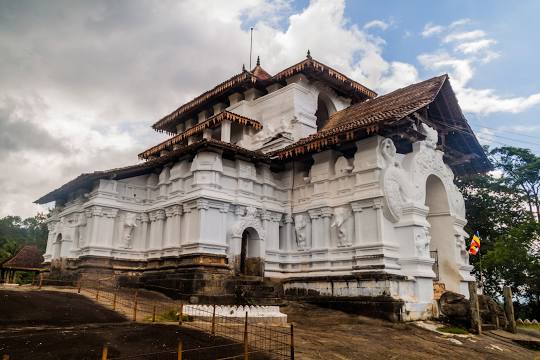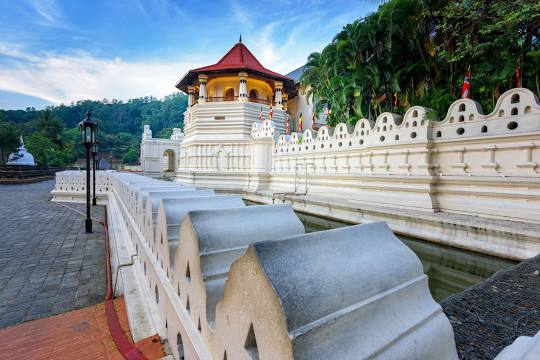
Kandy is a large city in central Sri Lanka. It’s set on a plateau surrounded by mountains, which are home to tea plantations and biodiverse rainforest. The city’s heart is scenic Kandy Lake (Bogambara Lake), which is popular for strolling. Kandy is famed for sacred Buddhist sites, including the Temple of the Tooth (Sri Dalada Maligawa) shrine, celebrated with the grand Esala Perahera annual procession.
The Temple of the Sacred Tooth Relic or Sri Dalada Maligawa, is a Buddhist temple in Kandy, Sri Lanka. It is located in the royal palace complex of the former Kingdom of Kandy, which houses the relic of the tooth of the Buddha. Since ancient times, the relic has played an important role in local politics because it is believed that whoever holds the relic holds the governance of the country. The relic was historically held by Sinhalese kings. The temple of the tooth is a World Heritage Site mainly due to the temple and the relic. Bhikkhus of the two particular chapters, the Malwathu chapters and Asgiri chapters, conduct daily worship in the inner chamber of the temple. Rituals are performed three times daily: at dawn, at noon and in the evenings. On Wednesdays, there is a symbolic bathing of the relic with a herbal preparation made from scented water and fragrant flowers called Nanumura Mangallaya; this holy water is believed to contain healing powers and is distributed to those present. The temple sustained damage from bombings by Janatha Vimukthi Peramuna in 1989, and by the Liberation Tigers of Tamil Eelam in 1998. However, it was fully restored each time.

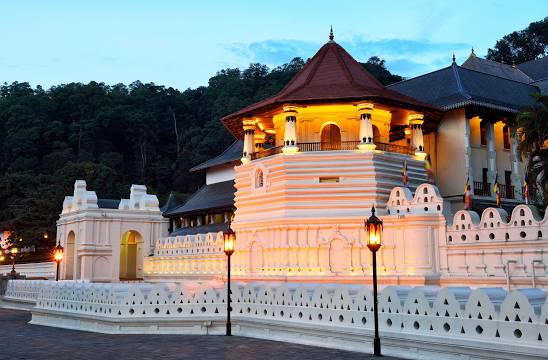
Royal Botanic Gardens, Peradeniya are about 5.5 km to the west of the city of Kandy in the Central Province of Sri Lanka. In 2016, the garden was visited by 1.2 million locals and 400,000 foreign visitors. It is near the Mahaweli River. It is renowned for its collection of orchids. The garden includes more than 4000 species of plants, including orchids, spices, medicinal plants and palm trees. Attached to it is the “National Herbarium of Sri Lanka”. The total area of the botanical garden is 147 acres, at 460 meters above sea level, and with a 200-day annual rainfall. It is managed by the Division of National Botanic Gardens of the Department of national botanic gardens.
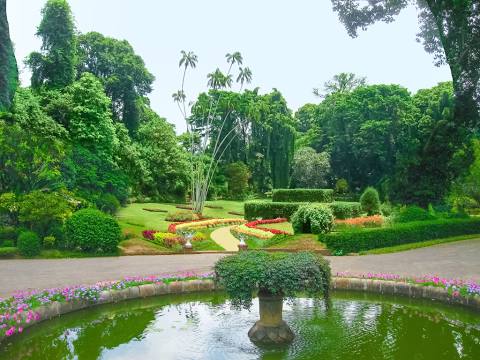
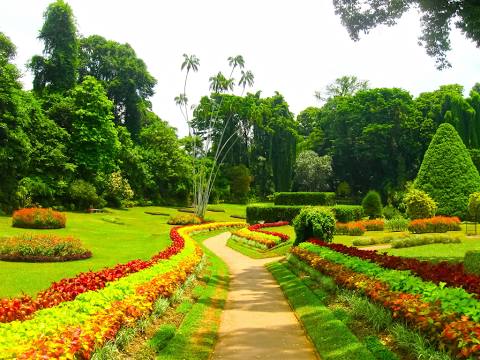
Udawattakele Forest Reserve often spelled as Udawatta Kele, is a historic forest reserve on a hill-ridge in the city of Kandy. It is 104 hectares large. During the days of the Kandyan kingdom, Udawattakele was known as “Uda Wasala Watta” in Sinhalese meaning “the garden above the royal palace”. The sanctuary is famous for its extensive avifauna. The reserve also contains a great variety of plant species, especially lianas, shrubs and small trees. There are several giant lianas. Many of small and medium size mammals that inhabit Sri Lanka can be seen here. Several kinds of snakes and other reptiles might be seen. Udawattakele was designated as a forest reserve in 1856, and it became a sanctuary in 1938. The Sri Lanka Forest Department has two offices in the reserve, one of which has a nature education centre with a display of pictures, posters, stuffed animals, etc. Being easily accessible and containing a variety of flora and fauna the forest has a great educational and recreational value. Groups of school children and students regularly visit the forest and the education centre. The forest is also popular with foreign tourists, especially bird watchers.

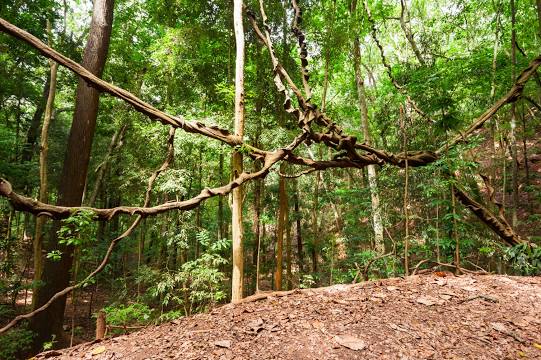
Kandy Lake, also known as Kiri Muhuda or the Sea of Milk, is an artificial lake in the heart of the hill city of Kandy, Sri Lanka, built in 1807 by King Sri Wickrama Rajasinghe next to the Temple of the Tooth. Over the years, it was reduced in size. It is a protected lake, with fishing banned.

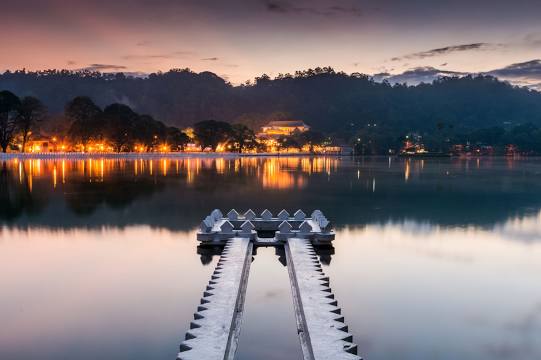
Lankatilaka Vihara is a Buddhist temple situated in Udunuwara of Kandy, Sri Lanka. It is located on Daulagala road approximately 4 km away from Pilimatalawa junction and a few kilometres from the buddhist temple, Gadaladeniya Vihara. It is considered as the most magnificent architectural edifice created during the Gampola era.
